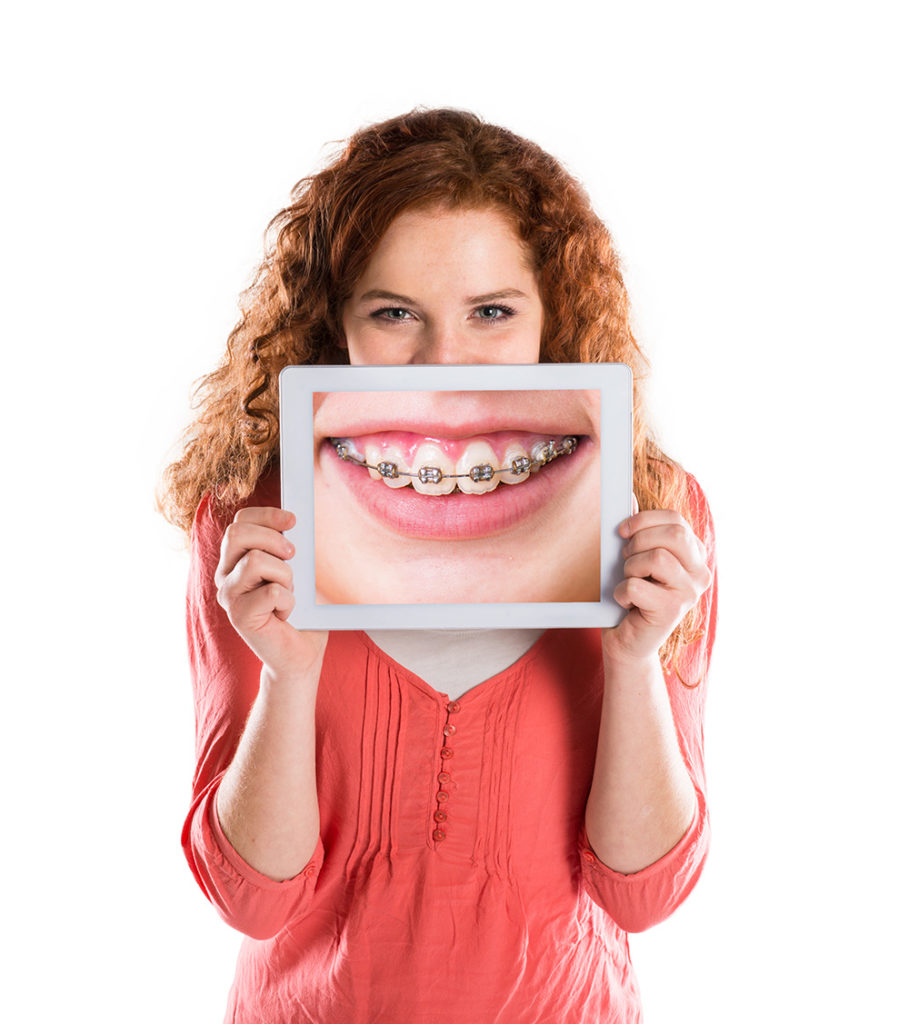Are you getting braces soon or do you already have braces? Want to know how they actually move your teeth? Here’s everything you need to know about how braces work:
The Parts
All braces have essentially four parts. These are the bracket, which is either ceramic or metal and is attached to the tooth, the glue or metal band, which attaches the bracket to their teeth, an arch wire, which is a thin piece of wire that runs from one bracket to another to put pressure on the teeth to which the brackets are affixed, and lastly, the bands, which hold wires against the brackets.
All of these parts are necessary in order to have a functional braces system. There are some types of braces which do not need ligature elastics (rubber bands), but every treatment will need brackets, wires, and some method of affixing the brackets to the teeth. Many patients will also use a system of rubber bands, which hook onto pegs or hooks on the brackets, which help to adjust the bite and the placement of the haw.
In rare occasions, a patient might be asked to wear headgear, which exerts even more force on the teeth and the jaw, to help make sure that the patient’s teeth are moving at an acceptable pace or to prevent some teeth from moving while encouraging others to move.
The Process
If you are about to get your braces on, you might be wondering how the braces are going to be applied to your teeth. The first step is to get x-rays. The orthodontist needs x-rays to first, evaluate whether or not you are a good candidate for braces (if you do not have all of your adult teeth or your wisdom teeth are coming in or something similar, it might be a good idea to wait).
Once it has been determined that you are a good candidate for braces, the next step is to set up an appointment for your braces to be applied. During the application, the first step is to clean your teeth and then to dry them. Glue will be applied to your teeth where the brackets are going to be placed, and then each bracket will be carefully attached, according to the positioning and angle the orthodontist has already determined. Once the brackets are in place and the glue has been cured, the orthodontist will put the arch wire into the brackets and will then use the elastic bands to secure it.
While this process is completely safe and your orthodontist will be careful, this can result in a sore mouth for a couple of days following your application. A good way to deal with the pain is to avoid eating hard, tough, or chewy foods. Stick to soup, mashed potatoes, scrambled eggs, and soft pasta. An over the counter painkiller could also help to reduce some of the inflammation that goes along with this process.
How Move Your Teeth
Once your braces are applied, how exactly do they move your teeth? Once you have your braces on, you will probably be able to feel the pressure they are putting on your teeth, especially during the first week of having them on and the first day or so after having an adjustment. Braces use pressure to slowly move your teeth into more optimal positions. As they push or pull on your teeth, the teeth slowly start to move in their sockets. Through a process called bone remodeling, the bone of your teeth is broken down on one side, and build back up on the other side. New bone fills in the space in the socket, often making your teeth even stronger than they were before.
Only a small amount of force is necessary in order to trigger this process, which is why you probably will not even feel the pressure being exerted on your teeth for most of your treatment. It really only takes about three days for the process of bone remodeling to start and then it takes around ninety days for the bone to be fully rebuilt in the socket. After you have your braces removed, it could take up to a year for the results to be fully stabilized, which is why your orthodontist will ask you to wear a retainer during this time. Otherwise, your teeth might start to drift back to their original positions.
Getting the Braces Off
The last step of your braces is to have them removed from your teeth. When your treatment is over, your orthodontist will set up an appointment with you to take off your braces. If the brackets are glued to your teeth, all that needs to be done is to squeeze the base of the bracket and it will come right off. This may leave some glue behind on the tooth, which your orthodontist will carefully remove. This process takes some time and no matter how meticulous your orthodontist is, there might still be a little bit of glue left behind on your teeth, which your dentist will likely find at your next appointment.
This process is usually painless. You might feel a small amount of pressure as the brackets are being popped off, but in general, it is just boring. You will probably be surprised by how strange your teeth feel against the inside of your lips and tongue once your braces are off. You are not used to the smooth surface of your teeth after having brackets and wires on for months or even years!



